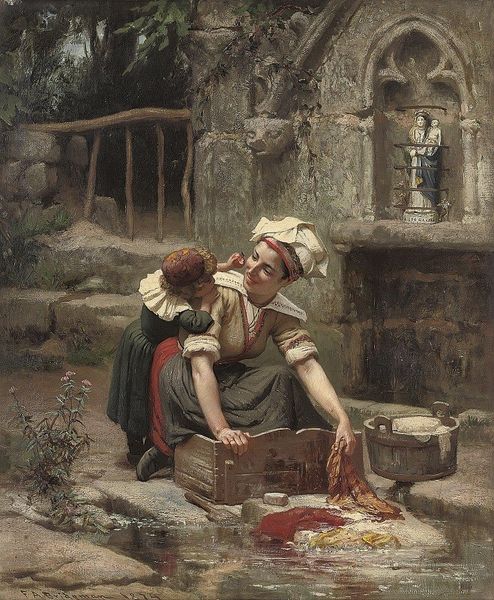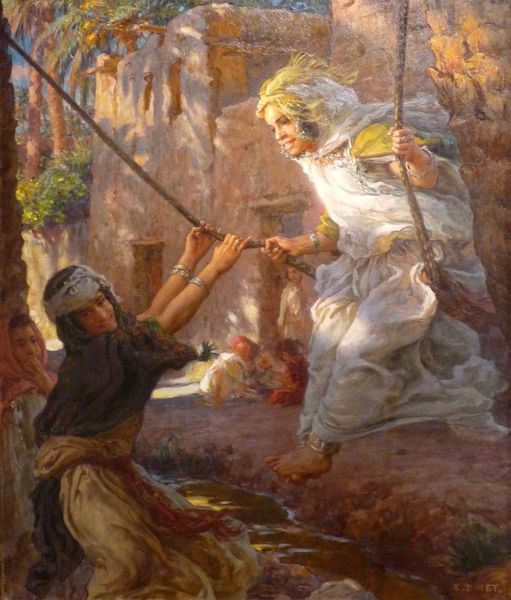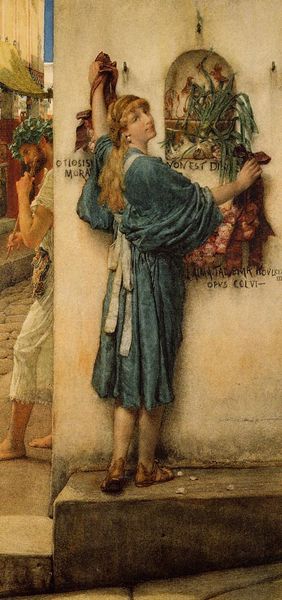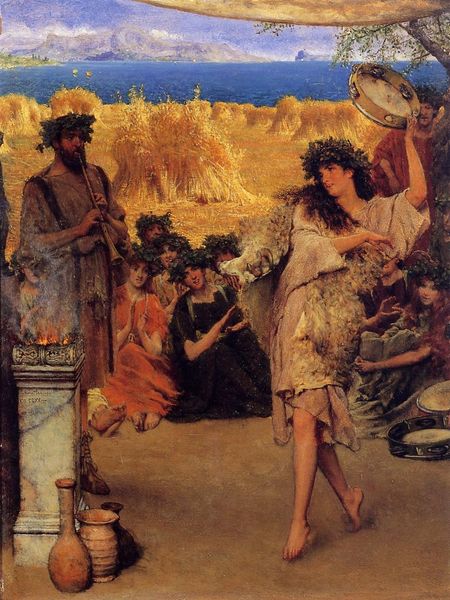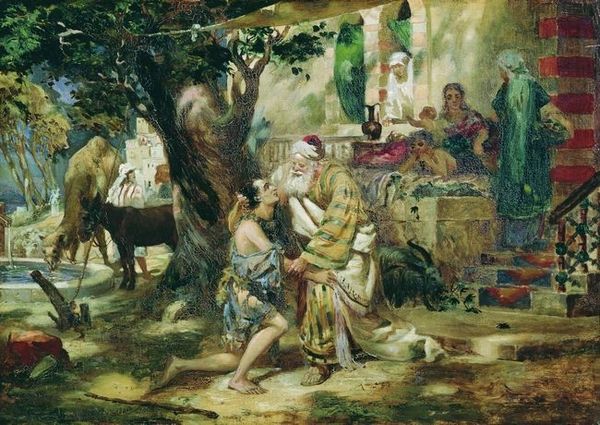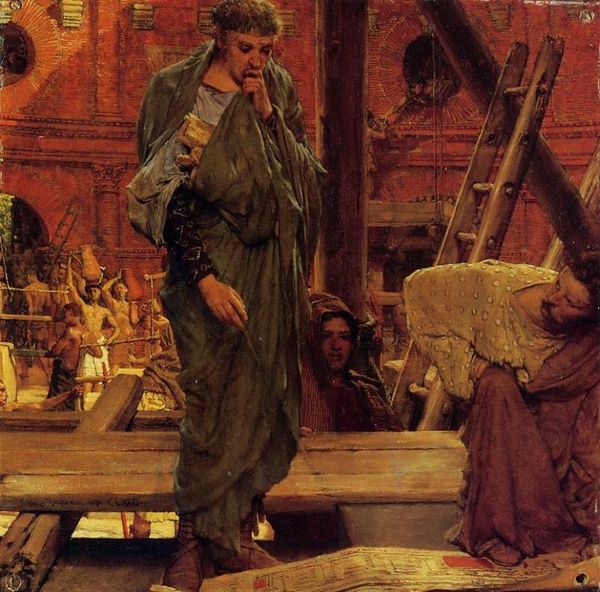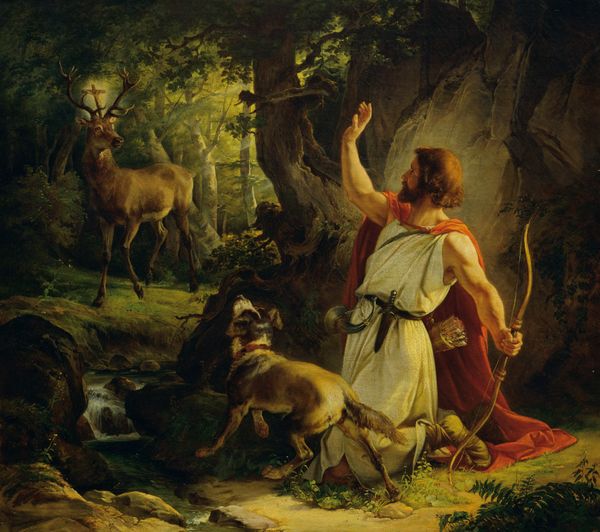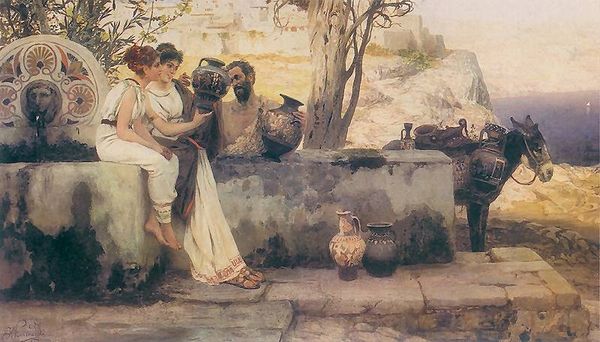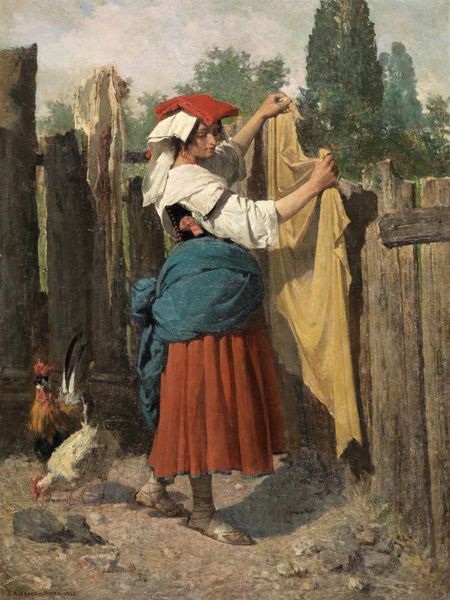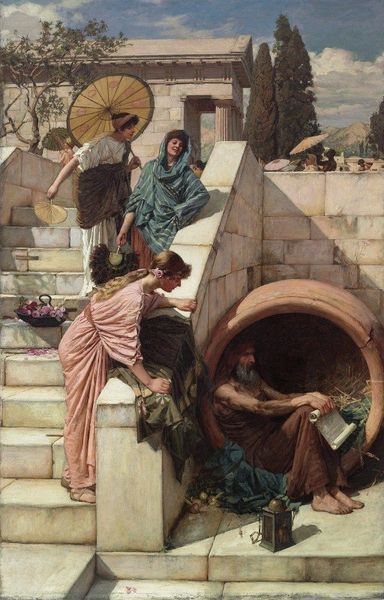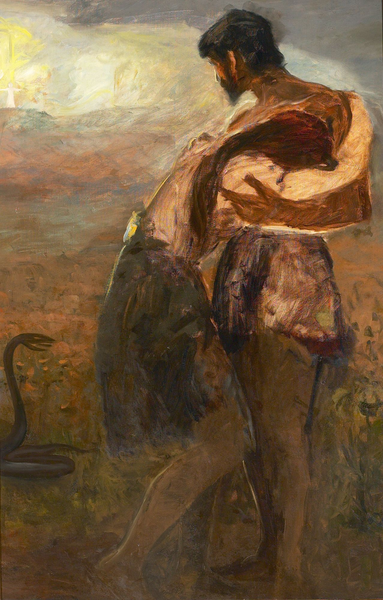
Copyright: Public domain
Curator: What a compelling scene. Henry Herbert La Thangue painted "Violets for Perfume" in 1913, using oil paint to capture a moment in time that feels both fleeting and eternal. Editor: It strikes me as instantly melancholic, a visual elegy. The subdued palette, the sifting of petals, it all evokes a sense of loss or the transience of beauty. Curator: La Thangue, known for his realism and his focus on rural life, presents a woman under a pergola sorting violets, presumably for perfume making. Violets themselves have rich associations, from modesty and faithfulness to remembrance and even death in certain contexts. Editor: The act of sifting is key, I think. It’s not merely harvesting; it’s separating, selecting, maybe even discarding. The violets falling, scattering on the ground—there's a deliberate visual weight to it, isn’t there? Symbolically, are we meant to consider ideas of beauty as fleeting? The weight of expectation in capturing scents that inevitably dissipate? Curator: It invites a poignant narrative, certainly. The location—possibly southern Europe given the light and architecture—suggests a connection to ancient traditions, and violets have been linked to fragrance and medicine since ancient times. It brings us back to questions around labour, commodity and place. How are we seeing representations of womanhood and what economic value do these depictions play within society? The dark skin tones of the central female subject positions complex questions concerning race too, considering how images affect emotional, cultural, and psychological weight over time. Editor: Yes, exactly, you see an emphasis on "tradition". The fact this work was created around the turn of the century opens it to all manner of analyses connected to nationhood, imperialist representations, cultural trends of exoticism and romanticism. The violet, often considered sentimental or nostalgic, is positioned here amongst a global trade market. Curator: Ultimately, "Violets for Perfume" offers more than just a glimpse into a historical process. It evokes a certain mood, an awareness of cycles and the delicate balance between utility and sentiment. Editor: And it pushes us to examine the frameworks, the historical layers that shape how we see, interpret and even feel about seemingly simple acts depicted on canvas. A complex picture to consider.
Comments
No comments
Be the first to comment and join the conversation on the ultimate creative platform.
